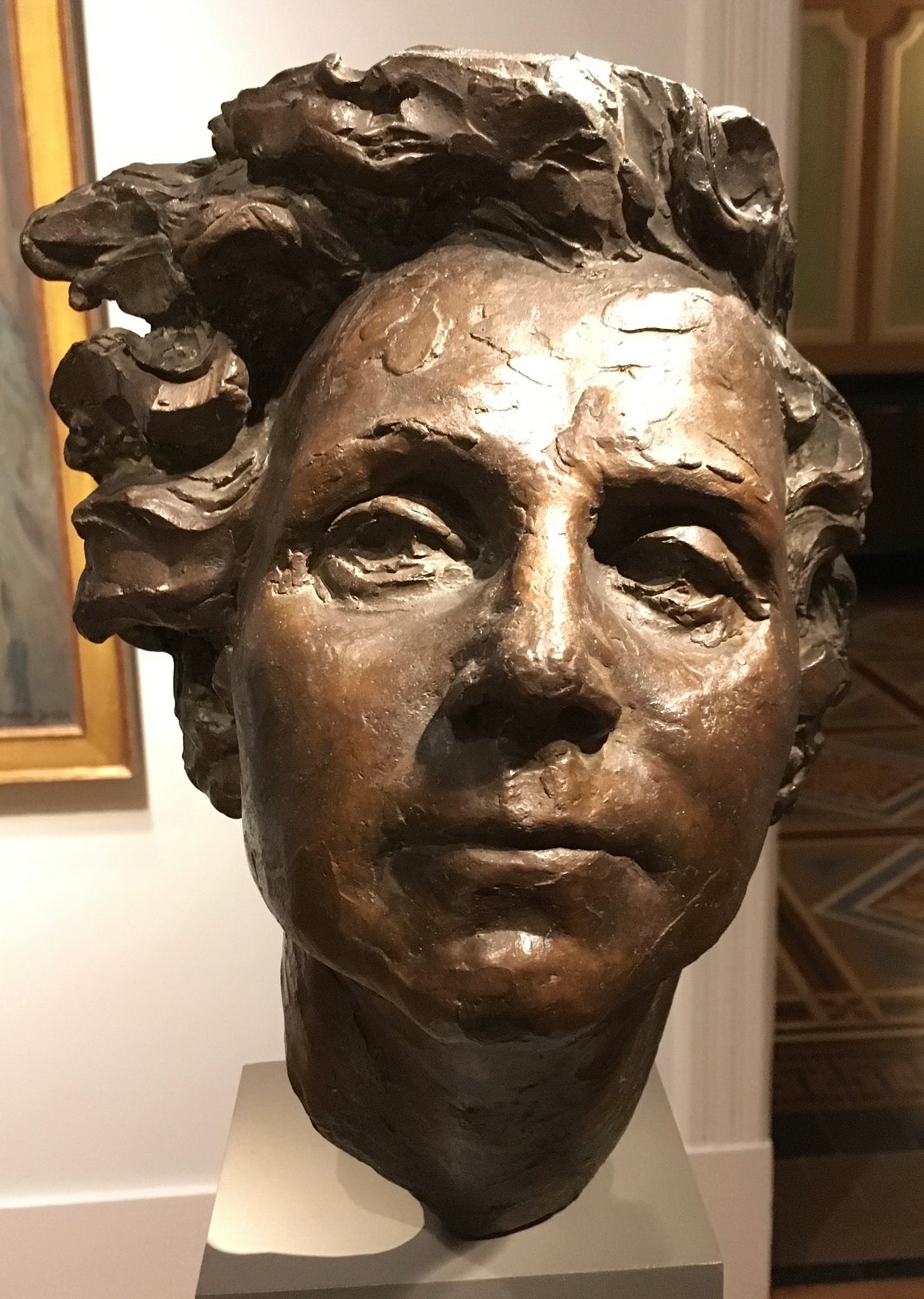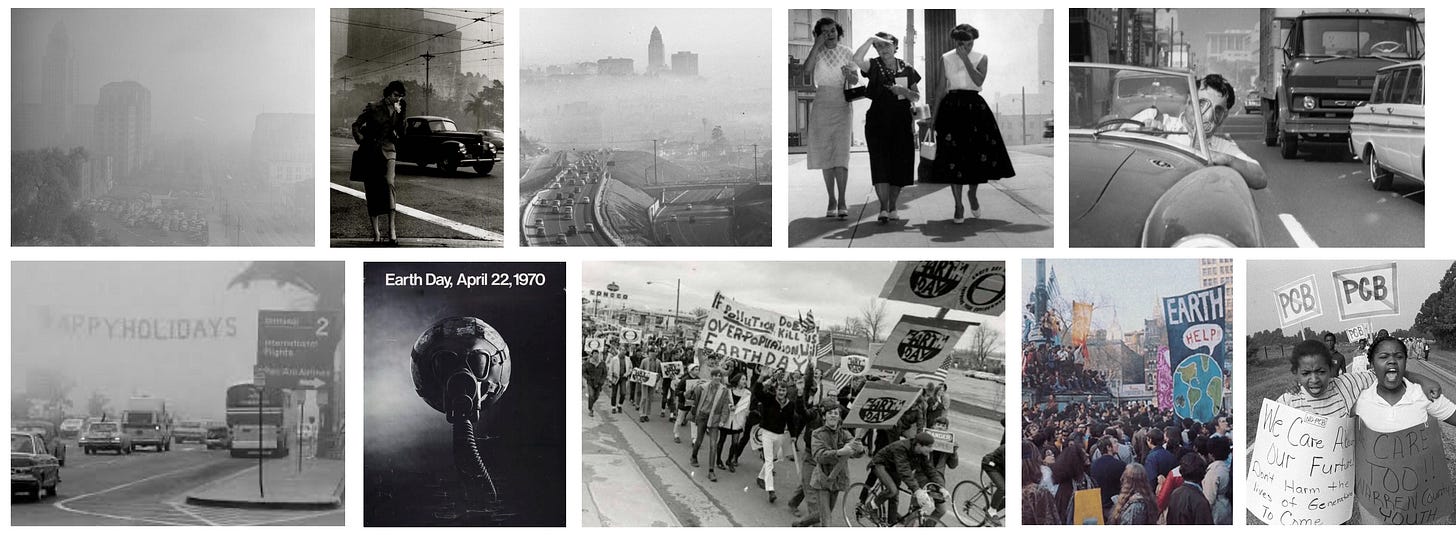The 20th Century: Major Steps Controlling Pollution in the US
Our Story Together Subseries Post #1.3
In the 20th Century in the United States it took decades before significant pollution control efforts got going, but when they did they resulted in:
(a) the creation of an environmental consciousness; (b) the Environmental Movement, and; (c) major environmental organizations focused on pollution;
the passage of major environmental laws like the 1970 Clean Air Act and the foundations of environmental regulatory policy overseen by newly created agencies like the Environmental Protection Agency (EPA).
See, Smell, Taste, Touch
All of this was driven by the fact that, contrary to the climate problem, people could see and smell and taste and touch pollution and experience its adverse effects. This led to a large and broad group of folks who were fed up and wanted something done.
After World War II the place where this came to a head was California, more specifically, Los Angeles and Southern California.
Smog — a word coined by combining the words smoke and fog — became so bad it set the stage for action. As a major historian of pollution efforts put it: “Many of the key pioneering scientific studies and control initiatives that would later shape emissions control efforts throughout the nation and the world were first undertaken in Los Angeles.”1
Three Main Actors in the Pollution Story Still the Same
As was the case in the 19th Century, the three main actors attempting to address pollution and the roles they played were basically the same:
pro-action types — regular folk activists and supporters of action;
experts, i.e., engineers and scientists, and;
government decision-makers.
The activists and supporters of action — including some from the business and agricultural communities particularly hard hit — pushed everyone to do something. However, they weren’t always in sync with what should be done.
The experts, many of whom were affiliated with industry, brought theories, facts and potential solutions — but could also slow things down by declaring more research was needed to reach certainty, an all too familiar delaying tactic against pollution reduction efforts.
Elected officials and regulators, caught between an aroused public and the special interests, worked to do something meaningful that would help and not hurt them politically.
The First Modern Regulatory Agency Focused on Pollution
Public outcry, regular folk activism, and concerns from impacted businesses and farmers finally overcame the opposition and led to state legislation passed in 1947 that allowed localities to form Air Pollution Control Districts with enforcement powers, which LA did a few months later. Thus began the creation of the modern regulatory agency focused on pollution.
But what and who, exactly, should be regulated? It took about 10 years for the scientific understanding of LA smog to be discovered and accepted and for the regulators to begin to make some progress. (I’ll be telling this story much more completely in upcoming posts as part of this “Our Story Together” Series.)

Environmental … Consciousness, Organizations, Movement, Laws
Nationally, the experience of pollution’s impacts drove the creation of an environmental consciousness, aided by Rachel Carson’s book Silent Spring published in 1962. Out of these experiences and this new environmental understanding arose organizations focused on pollution, beginning with the Environmental Defense Fund in 1967. These experiences and environmental understanding also laid the foundation for the phenomenal success of the first Earth Day in 1970, which gave a tremendous boost to this emerging movement, the Environmental Movement. All of this provided support for the creation of the Environmental Protection Agency (EPA) in 1970 and the passage of major environmental laws: the 1970 Clean Air Act, the 1971 Lead-based Paint Poisoning Prevention Act, the 1972 Federal Insecticide, Fungicide, and Rodenticide Act (which gave the EPA the legal authority to ban DDT that year), the 1972 Clean Water Act, and the 1974 Safe Drinking Water Act.
The Job Has Just Begun
One of the things the Environmental Movement learned is that passing laws is only the beginning. These laws are not self-enforcing — and the agencies responsible for implementation need minding and prodding, including through legal action. This has required the creation of professional environmental organizations to provide steady, sustained engagement and expertise.
Great things were accomplished in the 20th Century when the three main actors — pro-action types, experts, and government decision-makers — worked towards common goals in reducing pollution.
The same can be true on climate change in the 21st Century. But it is even more the case that the pro-action folks — i.e., The Climate Movement and Climate Action Supporters — must push everyone else towards action at the speed and scale needed. Join us!
If you are new here, check out our Introductory Series, as well as earlier posts in the Our Story Together Series. If you like this post, please “like,” comment, and share. And thanks for all you’re doing.
Scott Hamilton Dewey, Don’t Breathe the Air: Air Pollution and U.S. Environmental Politics, 1945-1970 (2000): p. 37.



